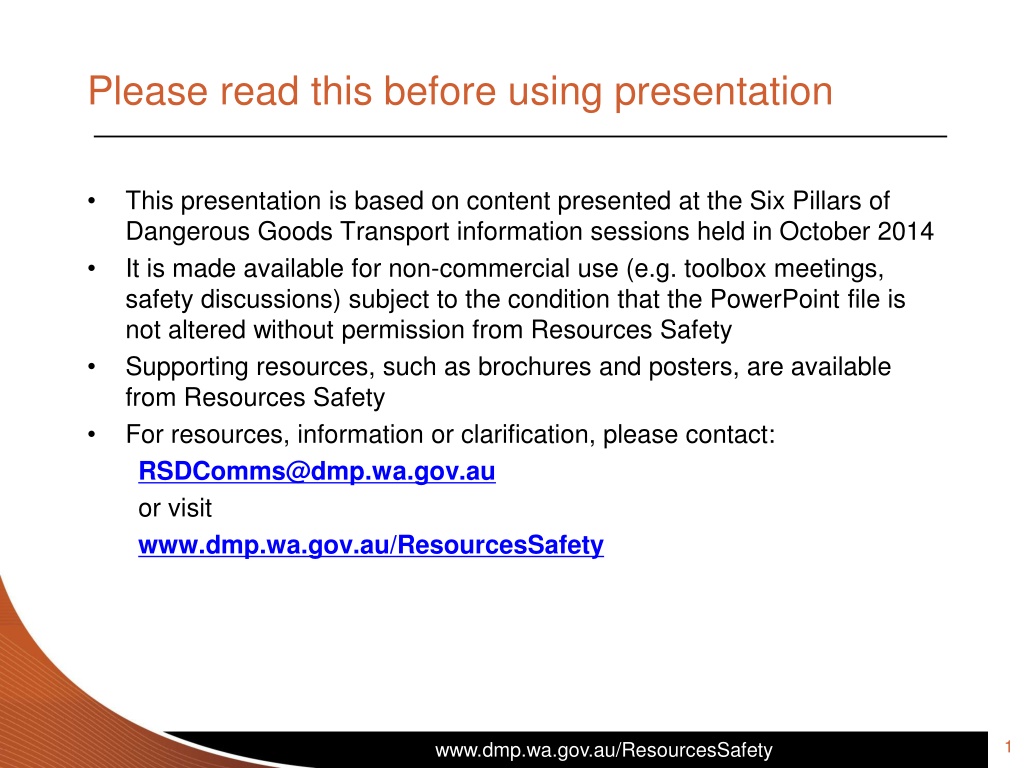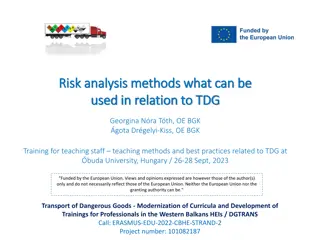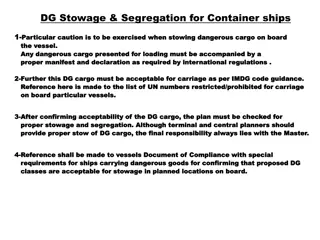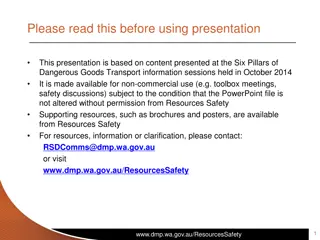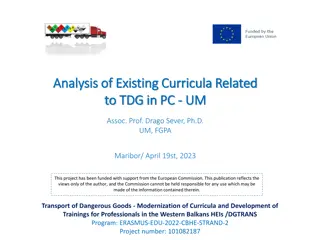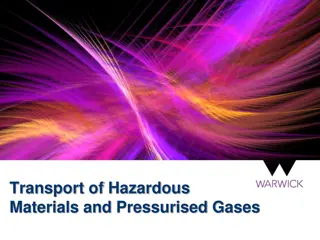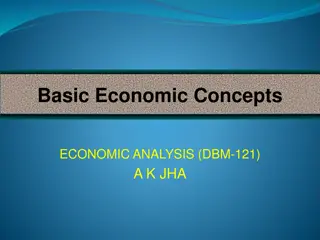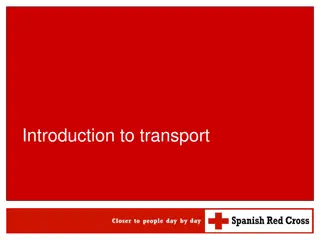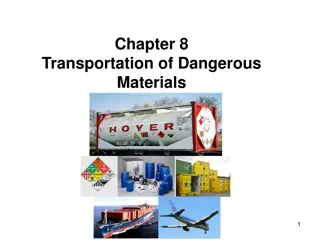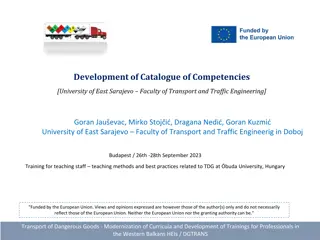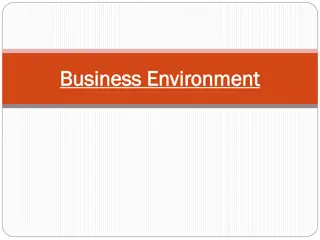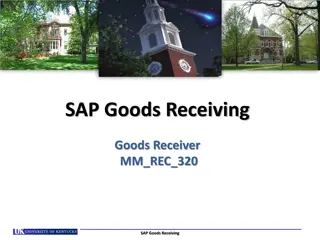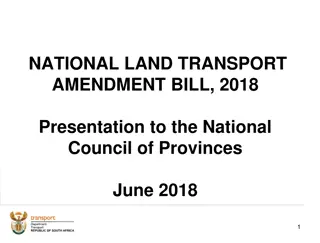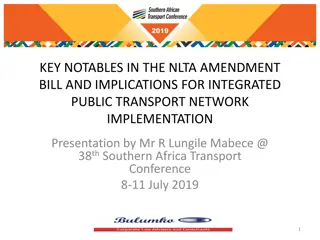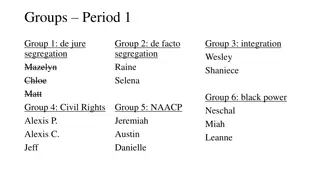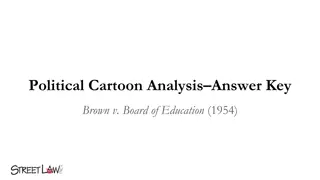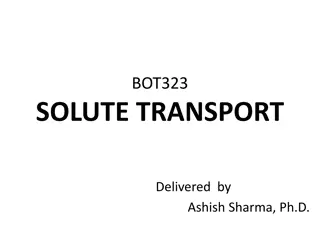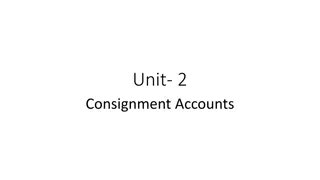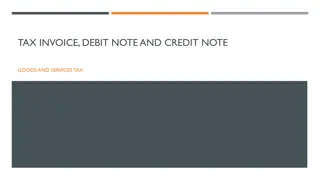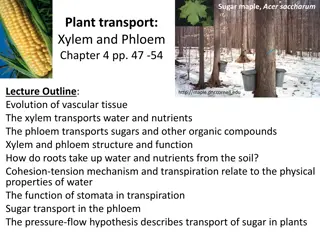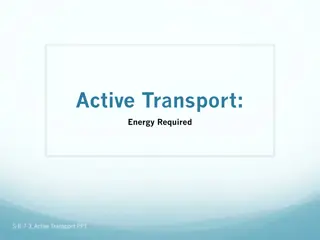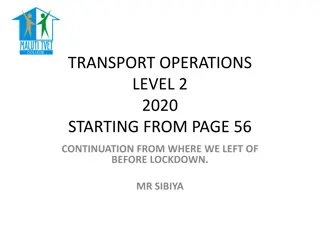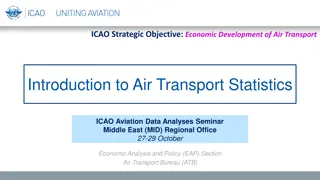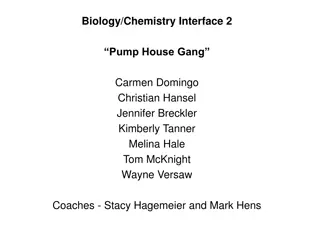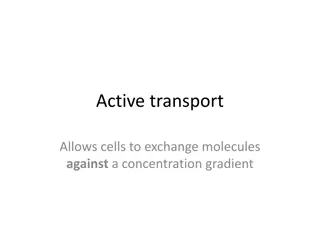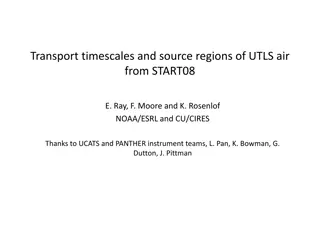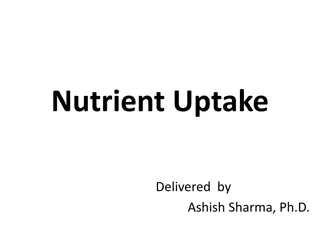Understanding Segregation of Dangerous Goods in Transport
This presentation provides valuable information on the segregation of dangerous goods for transport, based on the Six Pillars of Dangerous Goods Transport. It covers topics such as what dangerous goods to segregate, how to segregate them, and includes practical examples. Important examples of incompatible dangerous goods are highlighted, along with a detailed worked example on planning the transport of a load involving different classes of hazardous materials.
Download Presentation

Please find below an Image/Link to download the presentation.
The content on the website is provided AS IS for your information and personal use only. It may not be sold, licensed, or shared on other websites without obtaining consent from the author. Download presentation by click this link. If you encounter any issues during the download, it is possible that the publisher has removed the file from their server.
E N D
Presentation Transcript
Please read this before using presentation This presentation is based on content presented at the Six Pillars of Dangerous Goods Transport information sessions held in October 2014 It is made available for non-commercial use (e.g. toolbox meetings, safety discussions) subject to the condition that the PowerPoint file is not altered without permission from Resources Safety Supporting resources, such as brochures and posters, are available from Resources Safety For resources, information or clarification, please contact: RSDComms@dmp.wa.gov.au or visit www.dmp.wa.gov.au/ResourcesSafety 1 www.dmp.wa.gov.au/ResourcesSafety
Segregation Learn how to segregate dangerous goods for transport 2 www.dmp.wa.gov.au/ResourcesSafety
Six pillars of dangerous goods transport 3 www.dmp.wa.gov.au/ResourcesSafety
Overview What is segregation of dangerous goods? Applying Australian Dangerous Goods Code 7.3 (ADG7.3): What dangerous goods to segregate How to segregate dangerous goods Worked example 4 www.dmp.wa.gov.au/ResourcesSafety
What is segregation of dangerous goods? Some combinations of Classes or Divisions of dangerous goods are incompatible and must be kept apart. Examples of incompatible dangerous goods: Ammonium nitrate + Hypochlorite + Strong acids + Food + Diesel Acid Strong bases Class 8, Class 6 or Division 2.3 www.dmp.wa.gov.au/ResourcesSafety
Worked example Planning to transport a load of: A: Hydrochloric acid (UN1789 Class 8, PG II) 2 x 20 L containers B: Petrol (UN1203, Class 3, PG II) 6 x 200 L drums C: Sodium Cyanide, Solid (UN1689 Division 6.1, PG 1) 2 x 25 KG bags What needs to be segregated Table 9.1 How to segregate? www.dmp.wa.gov.au/ResourcesSafety
How to segregate? Use incompatibility table (table 9.1) to assess whether dangerous goods are incompatible See ADG7.3 part 9.2.2 for how to segregate: Carried on separate vehicles of the same combination road vehicle Approved segregation devices Packaging approved for segregation (part 9.2.2.4). Refer to table 9.3 for special segregation provisions prohibiting certain combinations for multiple trailer loads 10 www.dmp.wa.gov.au/ResourcesSafety
Any questions Email packages@dmp.wa.gov.au Email punit@dmp.wa.gov.au 11 www.dmp.wa.gov.au/ResourcesSafety
Dont forget Stay informed! Visit www.dmp.wa.gov.au/ResourcesSafety to sign up for our weekly news alerts 12 www.dmp.wa.gov.au/ResourcesSafety
